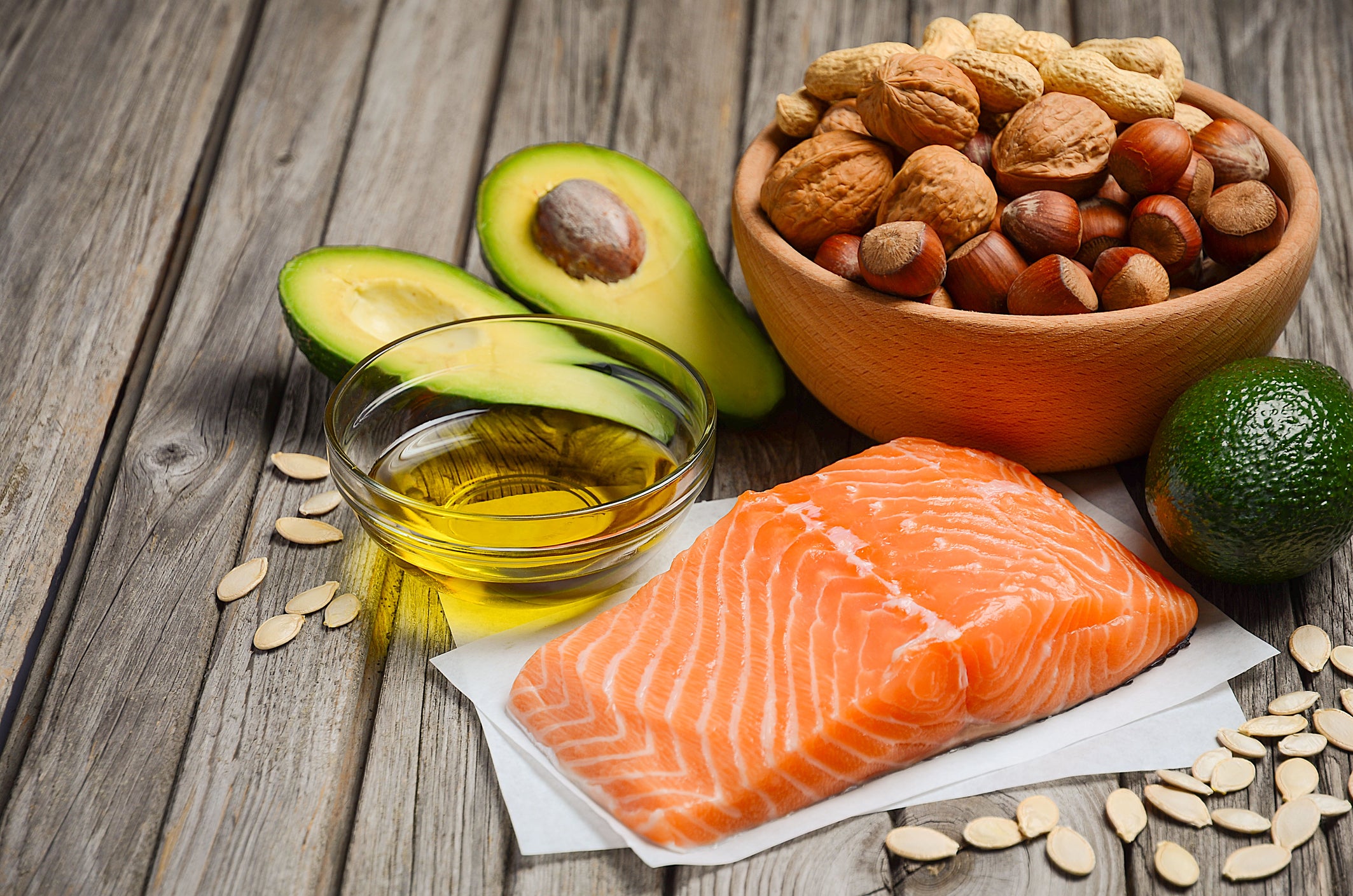
Once upon a time, fat was considered bad for you. The low fat craze of the 1990s ushered in countless food products low in fat, but high in carbohydrates. People started seeing blood sugars go up. People were also hungry! Fat helps you stay fuller longer because it takes longer to digest.
What we know is fat is an essential nutrient:
- Fat is a source of energy
- A part of hormones
- Is needed for the coating over the nerve cells
- Makes up part of cell membranes
- Cushions internal organs
- Helps absorb the fat-soluble vitamins (A, D, E and K)
- And is part of what makes up the brain
Just like people, fats come in many different forms. Some fats you want to have in your eating. Some fats you need to avoid.
The Nutrition Facts Labels are required to list total fat, saturated fat and trans-fat. If the label lists monounsaturated or polyunsaturated, the food manufacturer is usually trying to highlight that their food has healthier fats.
The healthier types of fat are monounsaturated and polyunsaturated. Healthy fats are found in plant foods like nuts, seeds, olives and avocadoes. The healthiest oils include olive oil, canola oil, peanut oil and avocado oil.
Unhealthy fats include saturated and trans-fats. Saturated fats are found in high-fat dairy products and fatty meats. Plant-based fats that are saturated included palm oil and coconut oil. Trans-fats are man-made and are listed as “hydrogenated” fats in the ingredient lists. Trans-fats are the unhealthiest fats.
The food labeling laws are interesting. If the food product has less than 0.50 grams of total fat, saturated fat and trans-fat, it can be considered fat free, saturated fat free or trans-fat-free food. So, if the serving has 0.49 grams of a particular fat or less, it can be considered free of that type of fat. That’s not the way most learned how to round fractions.
Saturated fat and trans-fats are considered “shelf-stable.” That means it takes longer for these fats to break down. Products like commercially baked cookies, pies and crackers can stay fresher for a longer period of time.
Listing trans-fats was a kiss of death for many food products. Manufacturers started eliminating trans-fats in foods but replaced them with saturated fats. Is that healthier? Only by the teeniest bit. That’s why higher fat foods like cookies can stay fresh longer than cookies baked with healthier fats.
Higher amounts of trans-fats and saturated fats are linked with higher cholesterol numbers and increases in insulin resistance.
Need some ideas to include healthier fats in your food?
- Take your multi-supplement or vitamins A, D, E and K with a lick of peanut butter, a bite of avocado or a few nuts.
- Add fat like peanut butter, avocado or canola oil to protein smoothies.
- Drizzle olive oil on veggies before roasting them.
- Use low-fat mayo in tuna, egg or chicken salad.
- Smear a little peanut butter on a cracker or stick of celery.
- Eat some nuts. According to the American Heart Association, you should limit intake to one-fourth a cup per day.
- Use chopped nuts or ground seeds for a coating on meat.
- Sprinkle seeds on salads, add to cottage cheese or yogurt.
- Use ground flax seeds in smoothies.
Look through your fridge and pantry to identify foods that have healthy fats and unhealthy fats. Work with your dietitian to find out more about incorporating healthy fats in your foods. Your dietitian can also help you with a makeover of your grocery list!
Information provided by Rene Norman, RD/LD, bariatric dietitian.
